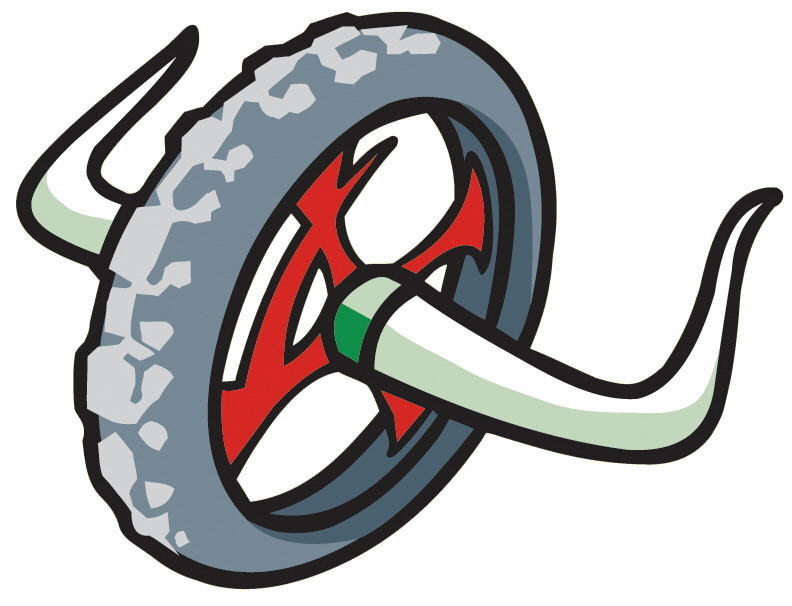

How you steer a bicycle
If you attempt to make a right turn on your bicycle before first leaning your bicycle over to the right, centrifugal forces will cause you to crash by falling over to the left. (These centrifugal forces are the same ones that throw you to the left when you drive a car around a hard right turn.) Leaning the bicycle to the right allows gravity to cancel the centrifugal forces. But how do you get the get the bike to lean to the right? By countersteering, i.e. by turning the handlebars to the left. In other words to make a right turn, you first turn the handlebars left! The centrifugal forces will then lean you and your bicycle in the proper direction.
Countersteering shows up in many ways. For example, you may also have noticed that it is surprisingly difficult to ride clear of a close, high curb. The difficulty occurs because you have to steer into the curb to get away from the curb.
Once you begin a right turn by countersteering to the left,, you might think that you would eventually turn the handlebars back to the right. Surprisingly, it turns out that you never need to turn the handlebars right. Don't believe this? Try it. While riding very calmly (perhaps coasting) let go with your left hand and push the handlebars with your right hand. With this handhold, you can only force the handlebars left, but you and your bike will go right.
The self-steering properties of the bicycle aid the turn. While standing still, lean a bicycle to the right and the front wheel will automatically steer right. The self-steering is caused by the bicycles "trail", the distance between the point where the wheel contacts the ground and the point where the steering axis of the front wheel intersects the ground. The trail is the single most important parameter in designing the bike. If the trail were to be negative (the wheel contact in front of the steering axis) the bike would be unrideable. Racing bikes, which need to be very maneuverable, have relatively small trails, typically around 6cm. Unfortunately, a small trail makes the bike less stable. Mountain bikes, touring bikes and lower performance bikes often have longer trails to make them more stable and comfortable.
A typical right turn goes like this: You initiate the turn by countersteering, turning the handle bars to the left (a,b). This causes the bike to start to lean over to the right. As it leans right, the trail forces will try to turn the wheel to the right (c). Gyroscopic forces like those found in a toy gyroscope will also try to turn the wheel right. By (d), these forces are larger than the force that you are applying to wheel, and the wheel will start to swing around to the proper direction. Finally, in (e) the trail and the gyroscopic forces will have turned the wheel back to the right, the bike will be leaning properly, and you will be in a safe and stable turn.
A "no hands" turn is similar, except that it is initiated by throwing your hips counter to the desired turn direction…left for a right turn. This leans the bike over (to the left for a right turn), causing the trail to turn the wheel counter to the desired direction (left). Just as in the countersteered turn, the centrifugal forces will then lean the bike in the appropriate direction (right), and the turn will finish executing just as it does for the countersteered turn.
제 영어 실력이 일천한 관계로...번역 못해드린 점 죄송스럽게 생각합니다. ^^;;
http://socrates.berkeley.edu/~fajans/Teaching/Steering.htm






 손님
손님
댓글 달기